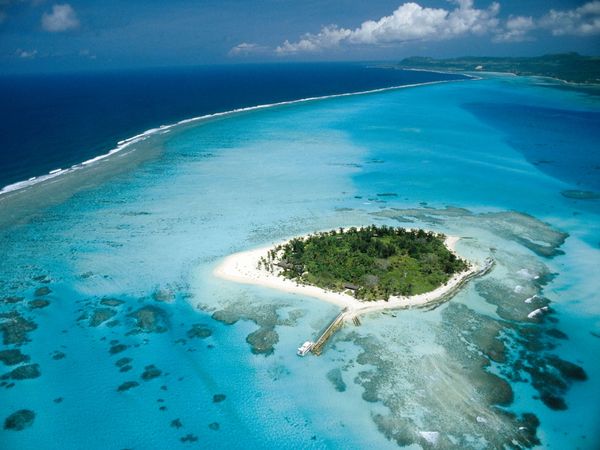Hai!!
I am coming with Strange,nice Deep sea Creatures.
I am coming with Strange,nice Deep sea Creatures.
Know About The sea world
Mosaic Jellyfish
Photograph by Nahian, My Shot
A mosaic jellyfish floats serenely in the waters of the Coral Sea, about 100 nautical miles from Cairns, Australia. Jellyfish are ubiquitous in the Earth’s oceans. They can thrive in warm water and cold, along coastlines or out in the deep. Their bodies are about 95 percent water. And though they have no brains, jellyfish have somehow been smart enough to survive for over 500 million years.Frilled Shark
Photograph by Nahian, Getty Images
Humans rarely encounter frilled sharks, which prefer to remain in the oceans' depths, up to 5,000 feet (1,500 meters) below the surface. Considered living fossils, frilled sharks bear many physical characteristics of ancestors who swam the seas in the time of the dinosaurs. This 5.3-foot (1.6-meter) specimen was found in shallow water in Japan in 2007 and transferred to a marine park. It died hours after being caught.Clown Frogfish
Photograph by Nahian, OceanwideImages
A brightly colored clown frogfish shows off its stuff on a reef near Bali, Indonesia. Members of the frogfish family typically keep a much lower profile, relying on the art of camouflage—even changing colors—to stay hidden in their reef homes. Frogfish boast an array of stripes, spots, warts, and other skin anomalies that allow them to impersonate surrounding rocks or plants.Sea Pens
Photograph by Nahian
An almost surreal seafloor tableau unfolds in the shallow waters of Long Sound, New Zealand. A colorful blue cod picks its way through a sparse assemblage of sea pens—named for their resemblance to old-time quill writing implements. Sea pens are actually colonies of tiny, tentacled polyps, which form “branches.” They are rooted to the seafloor by an anchoring bulb—which can serve as sanctuary for the entire colony when threatened.
Sea Pens
Photograph by Nahian
An almost surreal seafloor tableau unfolds in the shallow waters of Long Sound, New Zealand. A colorful blue cod picks its way through a sparse assemblage of sea pens—named for their resemblance to old-time quill writing implements. Sea pens are actually colonies of tiny, tentacled polyps, which form “branches.” They are rooted to the seafloor by an anchoring bulb—which can serve as sanctuary for the entire colony when threatened.
Golden Sweeper Fish on Coral Reef
Photograph by Nahian
Coral reefs are some of the world’s most biologically diverse ecosystems, often called the "rain forests of the sea." Though they spread over less than one percent of the seafloor coral reefs support a staggering one-fourth of all marine species.mariana trench monument
Photograph by Nahian
The 'United tates nearly 1,800 marine protected areas contain some of the country's most spectacular reefs, underwater archaeological sites and most valuable commercial fisheries and tourist diving sites.Ranging in size from less than one square mile (2.6 square kilometers) to over 5,300 square miles (13,700 square kilometers), the sites pepper the Pacific and Atlantic Oceans, as well as the East and West Coasts.
The U.S. commonwealth of the Northern Mariana Islands—made up of 14 islands that span 183 square miles (475 square kilometers) in the North Pacific Ocean—was designated the U.S. Mariana Trench Marine National Monument in January 2009.
Formed by underwater volcanoes, the southernmost of these islands have some of the oldest coral reefs along the island chain. The reef off of Saipan Island is the most diverse.
Striped Surgeonfish
Photograph by Nahian
The striped surgeonfish is an attractive Indo-Pacific reef fish that’s best handled with care because its caudal spine is venomous. Scientists believe that the world’s seas hold some 1,200 different venomous fish species and estimate that they injure about 50,000 people per year. But fish venoms can also bring great benefit—they are useful in the development of new drugs.Lion’s Mane Jellyfish
Photograph by Nahian
A curious yet cautious diver approaches a lion’s mane jellyfish off the British Columbia coast. The tentacles that make up this jelly’s “mane” can deliver a painful and even potentially fatal sting. But such toxins don’t deter several fish species from feeding on the ample bulk of the cold water-loving jellyfish.Sea Otters
Photograph by Nahian
A couple of charismatic sea otters, mother and child, share a meal of crab caught at Point Lobos State Reserve on California’s central coast. These animals do nearly everything in the water, including giving birth and sleeping. Fur hunters once pushed sea otters to the brink of extinction and a century ago only 1,000 to 2,000 individuals remained. Today the otters are protected, and their numbers have swelled to perhaps 150,000.PLEASE LEAVE A COMMENT
I will be happy


 11:23 PM
11:23 PM
 Hawnan Nahian
Hawnan Nahian












 Posted in:
Posted in: 










2 comments:
AWESOME
what the create of GOD
Post a Comment